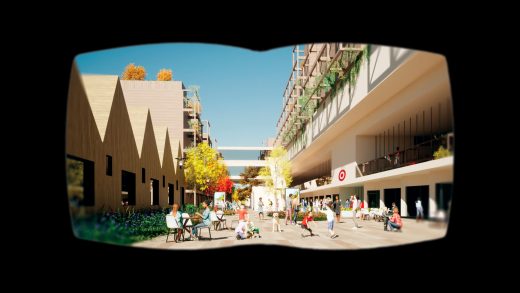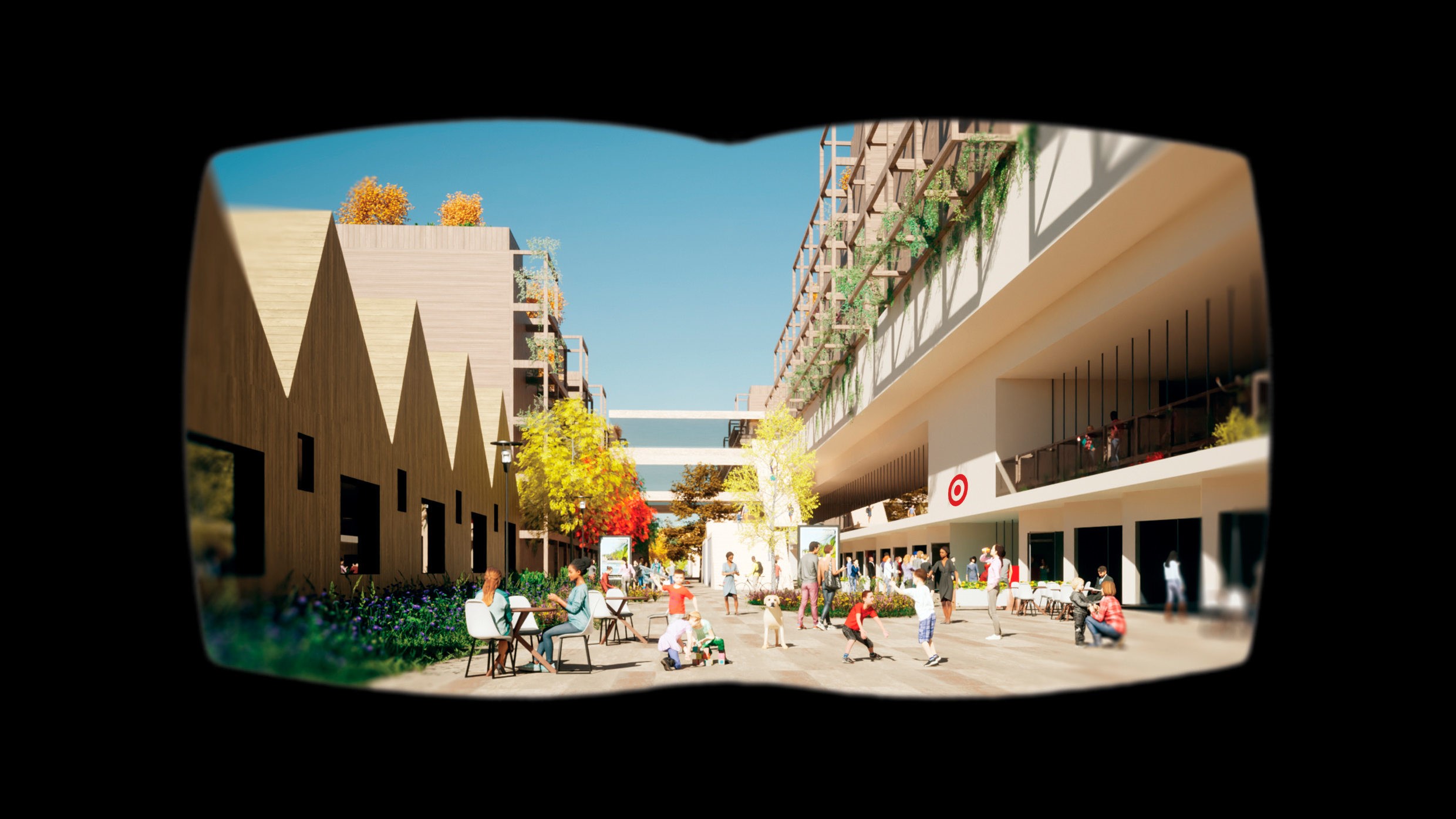The wild ways VR is changing how buildings are designed
By Nate Berg
I’m hovering in the air, looking into an equipment-stuffed mechanical room on the roof of a high-rise. There’s a pipe running across the utility space and connecting down into the innards of the building’s plumbing system—and from this vantage point, it’s clear that something’s wrong. An elbow in the pipe is misaligned with those around it, and wherever the other end is going, it’s not going to match up with the intricate maze of pipes it takes for a tower to function. Floating in space and staring down this small but potentially disastrous flaw, I can just imagine the expense and effort it would take to fix it. Luckily, this building hasn’t been built, and what I’m looking at is just an elaborate digital mock-up.
This impossible view is made possible through virtual reality. I’m wearing a Meta Quest 3 VR headset, and touring a digital model of a demonstration building created by the architecture, engineering, and construction software giant Autodesk. The company is showing off Workshop XR, a new digital workspace for designers, engineers, and general contractors that creates an immersive way to inhabit the 3D digital models that are used to design and build pretty much any building of scale in the modern world.
The purpose of Workshop XR is to improve what’s known as design review, or the preconstruction double-checking that goes into identifying problems and refining designs before the first shovel hits the ground. The software creates a one-to-one digital version of the building that stakeholders can walk through virtually using VR headsets to experience the space more viscerally than they can when looking at a screen. They can also see when a pipe isn’t in the right place.
This type of view is becoming increasingly common in the development, design, and construction of buildings as the architecture, engineering, and construction community embraces “extended reality” (the “XR” in Autodesk WorkshopXR).
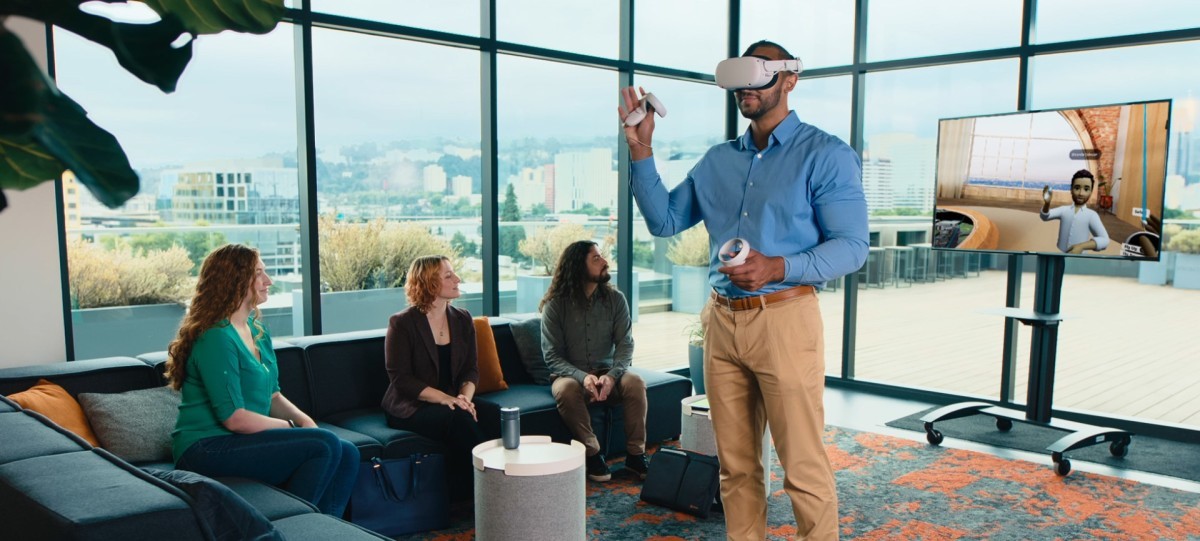
Whether it’s through the fully immersive virtual reality of a headset like the Meta Quest, or in the digitally overlaid mixed reality of see-through hardware like Magic Leap and Apple’s Vision Pro, this technology is already changing the way buildings get designed and built.
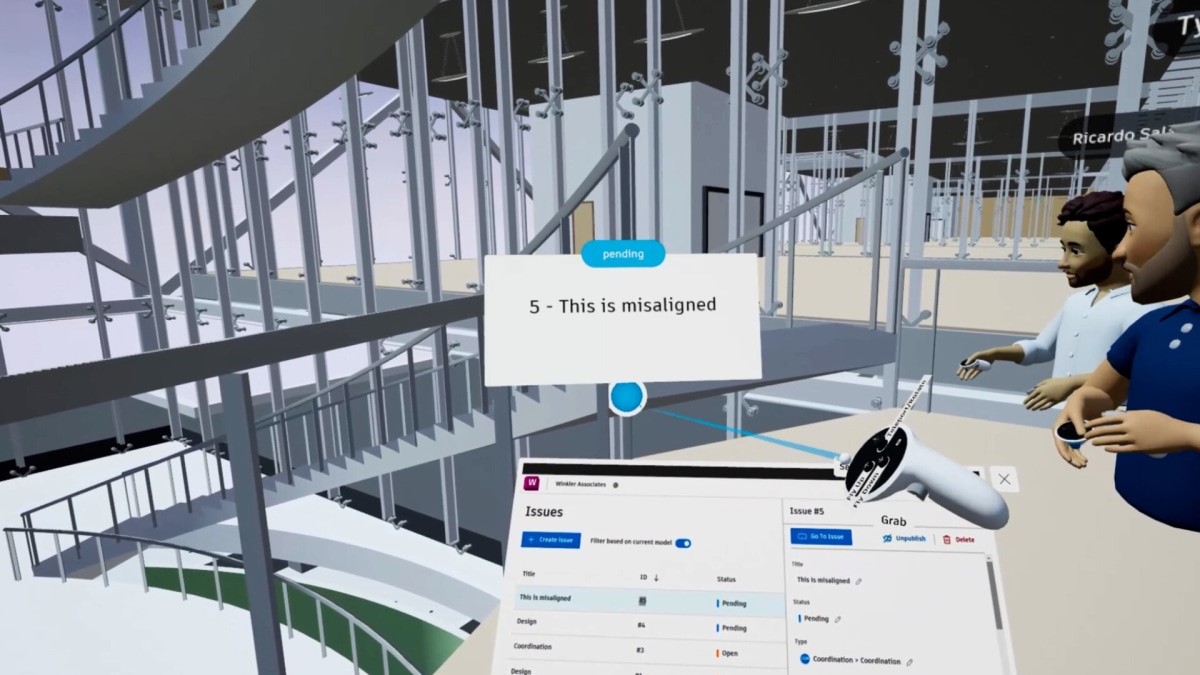
Software evolution
Buildings are now being designed in 3D from their earliest iterations. Industry-standard design tools such as Revit and Rhino make it intuitive for designers and builders to take an idea and turn it into a three-dimensional digital model that can be made construction-ready in remarkably little time. But while the model is 3D, how that model is viewed is typically not, and that can lead to problems during construction.
“Reviewing on a 2D screen is inherently limiting when you’re building a building. It’s really easy to miss things,” says Gabe Paez, head of XR products at Autodesk. “When you’re in that building at the end of the project, you see things that you just didn’t see when you were designing.”
Paez says Autodesk’s WorkshopXR is a way to make sure those mistakes don’t find their way into the finished building. Instead of that misaligned pipe being discovered by a contractor or inspector during the construction process and going through the expense and effort of deconstructing and reconstructing, the mistake can be detected and fixed in an immersive 3D model before it’s an actual problem.
“An issue missed early on can have a massive impact downstream. And that impact is not just cost and time and dissatisfaction, but honestly it really comes down to waste,” Paez says. Using VR, project managers can reduce the on-site change orders that stretch construction timelines and the last-minute redesigns that can burn through an architect’s overtime budget. That makes the construction process simply more efficient. “There’s tremendous value to be created,” Paez says.
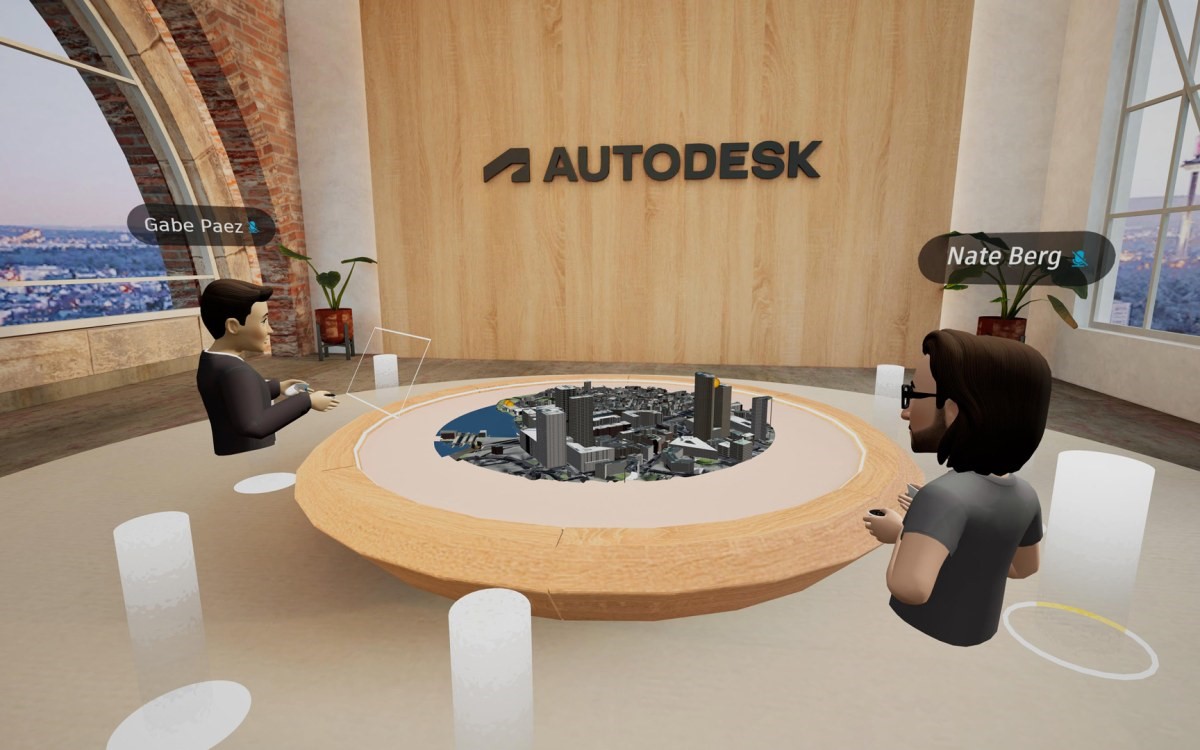
Others see benefits much earlier in the process. Christian Giordano is president and co-owner of the New York-based design firm Mancini Duffy where he’s led the creation of a virtual reality software suite called the Toolbelt. Using headsets in a dedicated design lab, the Toolbelt brings clients inside working 3D models of their projects to experience them spatially and provide design guidance that can be reflected in the model almost instantly.
“Our biggest problem as architects and designers is just getting clients to make decisions,” Giordano says. “We can do what a normal architect does in three weeks in three hours in one session because we are getting real-time feedback from the client.”
The system was developed over three years to speed up the process of translating a client’s desires into 3D models. Putting them inside the project as early as possible, the Toolbelt facilitates design conversations in a way that sketches and renderings can’t, Giordano says. “Our goal was to make it a seamless process so that if the client says ‘I don’t like that over there,’ we just move it right then and there in our Revit model, and it moves directly in the VR headset,” he says.
The tool has been especially useful with Mancini Duffy’s hospitality clients. One is Tommy’s Tavern and Tap, a sports bar chain with locations across New Jersey and the Northeast. Giordano says the Toolbelt design process has helped check off a very important box for the owner. “We will literally walk him around in virtual reality and he will sit at every single seat at a restaurant—hundreds of seats—and make sure he can see a television,” Giordano says. “There’s no drawing, no rendering that we could ever do that would give the client that experience.”
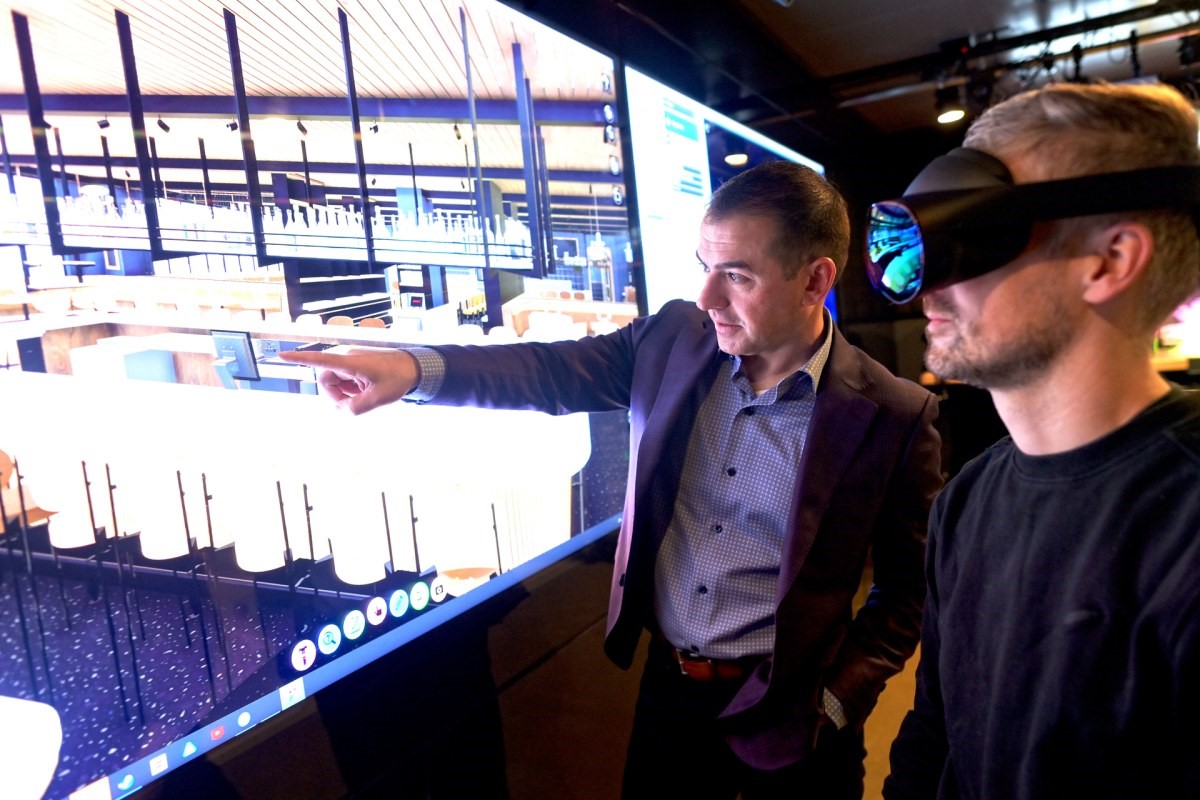
Giordano says the Toolbelt is now used on every one of Mancini Duffy’s projects. The first client to try it out was Yann De Rochefort, whose Spanish tapas restaurant Boqueria has about a dozen locations across the U.S. He sees the Toolbelt as a way to collaborate with the architects.
“It used to be that when a restaurant was done, there would be perspectives that would surprise me, where I would say, ‘Oh, I really didn’t consider that you would have this viewing angle into the kitchen from the dining room if you sat at one of these tables,’” he says. “And that is much, much rarer now.”
De Rochefort has also worked with a newer version of the Toolbelt that can be used on location. Wearing an augmented reality headset inside the raw space of a future restaurant, he could toggle on the working model, overlaying into his view of the space as he moved around. “It really speeds up the design cycle,” he says. “Once you have it, you’re loathe to work without it.”
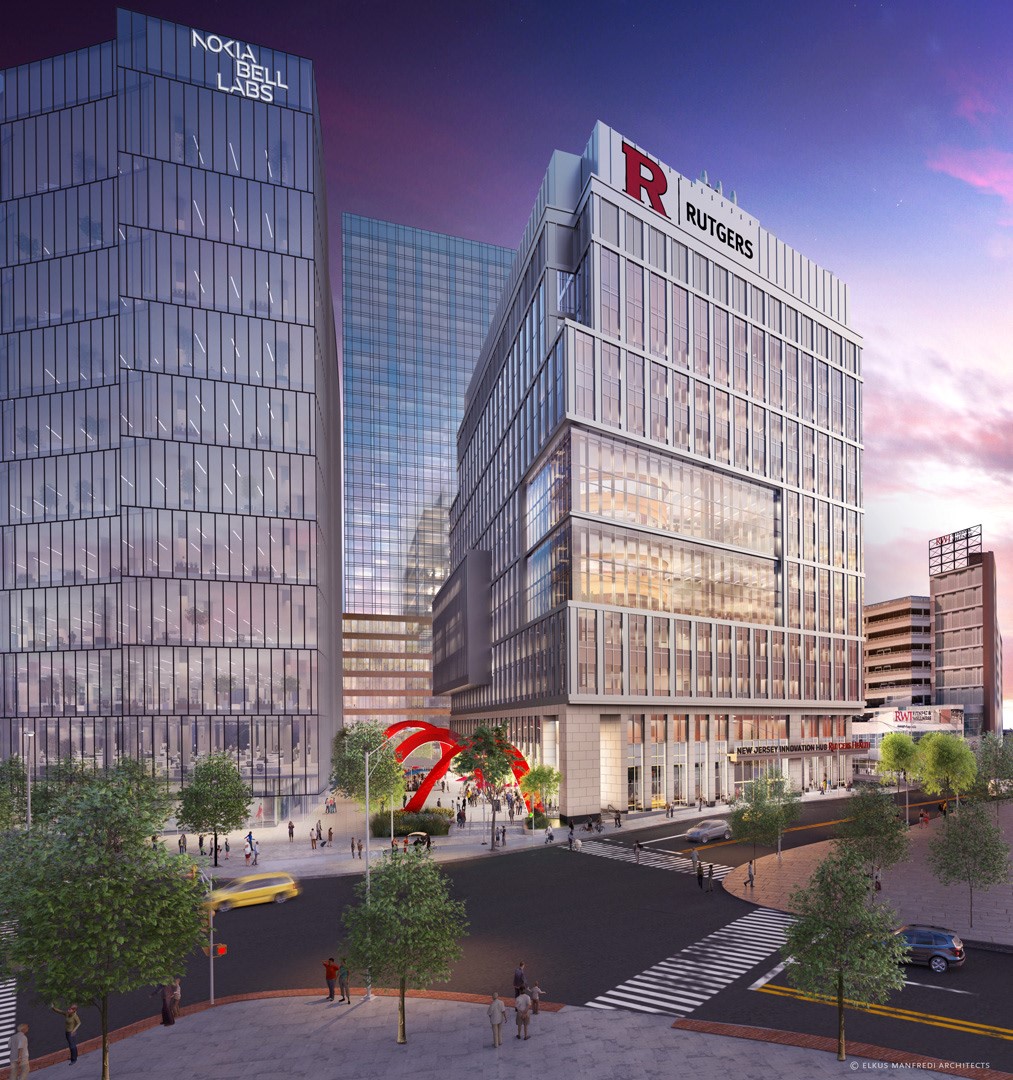
In real space
Headset tools can also serve to broaden access to the design process, especially with unconventional projects.
Hush, a New York based experience design firm, is working on interactive and public art elements of a $1.5 billion life science and innovation hub under development in New Brunswick, New Jersey. Intended to weave together the multibuilding district, the art and interactive elements Hush has designed are massive in scale, winding like giant ribbons from the public realm into and through the buildings. There’s a 40-foot-tall looping sculpture and a 65-foot-long digital screen embedded into the floor of a lobby. The design, Hush creative partner David Schwarz concedes, is a bit unusual.
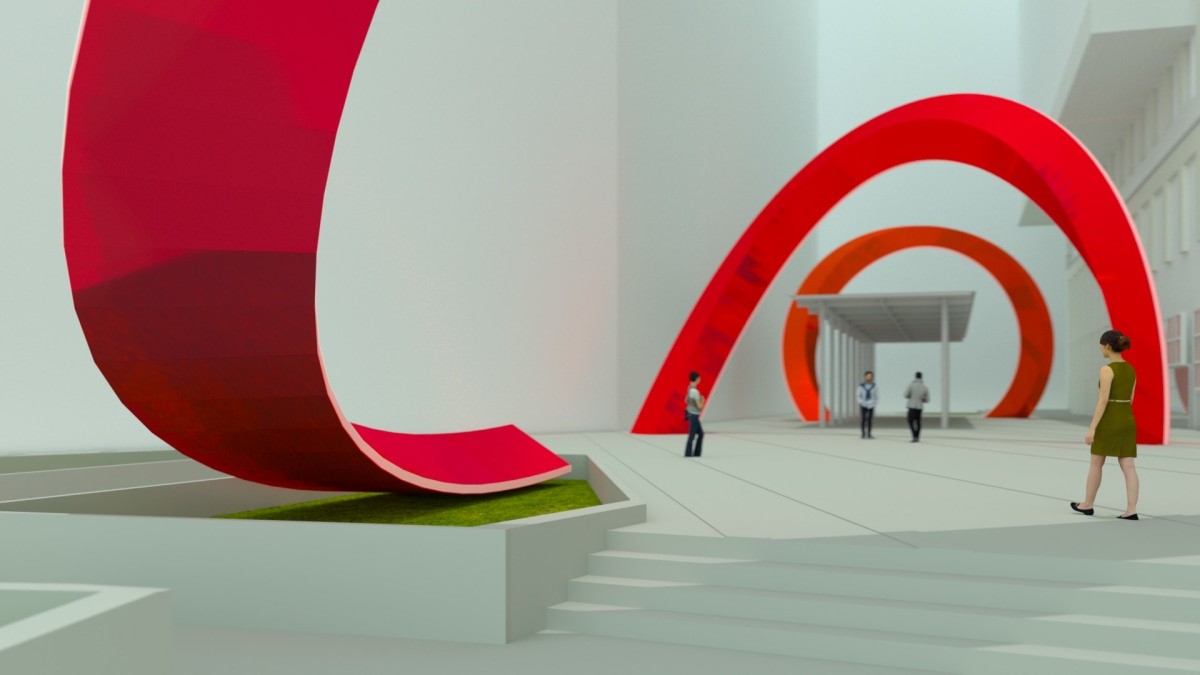
“You kind of run out of language to talk with clients about it, to tell them what your intention is because they’ve never seen anything like this,” he says. “How do you tell people what it’s going to feel like to walk under football field-sized pieces of public artwork?”
One way is to show them. Hush partnered with the augmented reality headset maker Magic Leap to help visualize what it was proposing for the project. Using the headsets and a huge rented warehouse, Hush brought the project’s clients to experience a one-to-one scale model of their looping sculpture and floor screen installation. They could walk through and around the proposed design elements, seeing their scale and size through the headsets while designers on-site were adjusting the 3D model in response to their feedback.
“That essentially accelerates the process for us like three or four times,” Schwarz says. “People might be from completely different disciplines and have never had to bridge that conceptual-reality gap before. This brings everybody up to speed very quickly because there’s simply no explanation required.”
Visualizing ideas is nothing new for architects and designers, of course, but technology is advancing to a point where clients don’t have to take as big a leap of faith in commissioning a design or approving a project. “All of this stuff is really to answer this impossible-to-answer question, which is What does it really feel like at scale? And so far we haven’t found a better tool to do that,” Schwarz says.
The price of new technology
The limiting factor for the wider adoption of these technologies may be cost. For now, virtual and augmented reality headsets are too expensive to be widely used at most design firms. On the more affordable end of the spectrum, Meta’s Quest 3 is $499. Magic Leap’s latest headset starts at $3,299. When it’s released in February, Apple’s Vision Pro will start at $3,499.
But these costs may eventually go down, making access to the tools more common. Some believe this could help create conditions for more equitable, sustainable design, and not just at the scale of a building.
Alex Yuen, an architect and a lecturer in urban design at Harvard University’s Graduate School of Design, has been exploring the use of virtual reality in his architectural practice and his teaching. His current work at Harvard is looking into ways that virtual reality can be integrated into large-scale urban design. Often done at the neighborhood level, urban design is usually a zoomed-out design process, as if the designers are viewing their work from the window seat of an airplane.
Yuen says this overhead plan view is good at forming logical layouts and places, but it can overlook what it might feel like to zoom in and actually be on the ground in the environment. What, he asks, are the implications of these designs for someone moving through them or living in them? How does the layout of roads and buildings and landscapes, so clean from the sky, result in harmony or discord when a person is down amid them all, experiencing how they relate at a human level?
Virtual reality, he says, allows for both perspectives—the top down, and the street level—giving designers a better sense for how their intentions will actually be seen and felt. Through a partnership with the VR headset maker HTC Vive, Yuen’s post-professional graduate students are bringing these perspectives, and many others, to their design exercises.
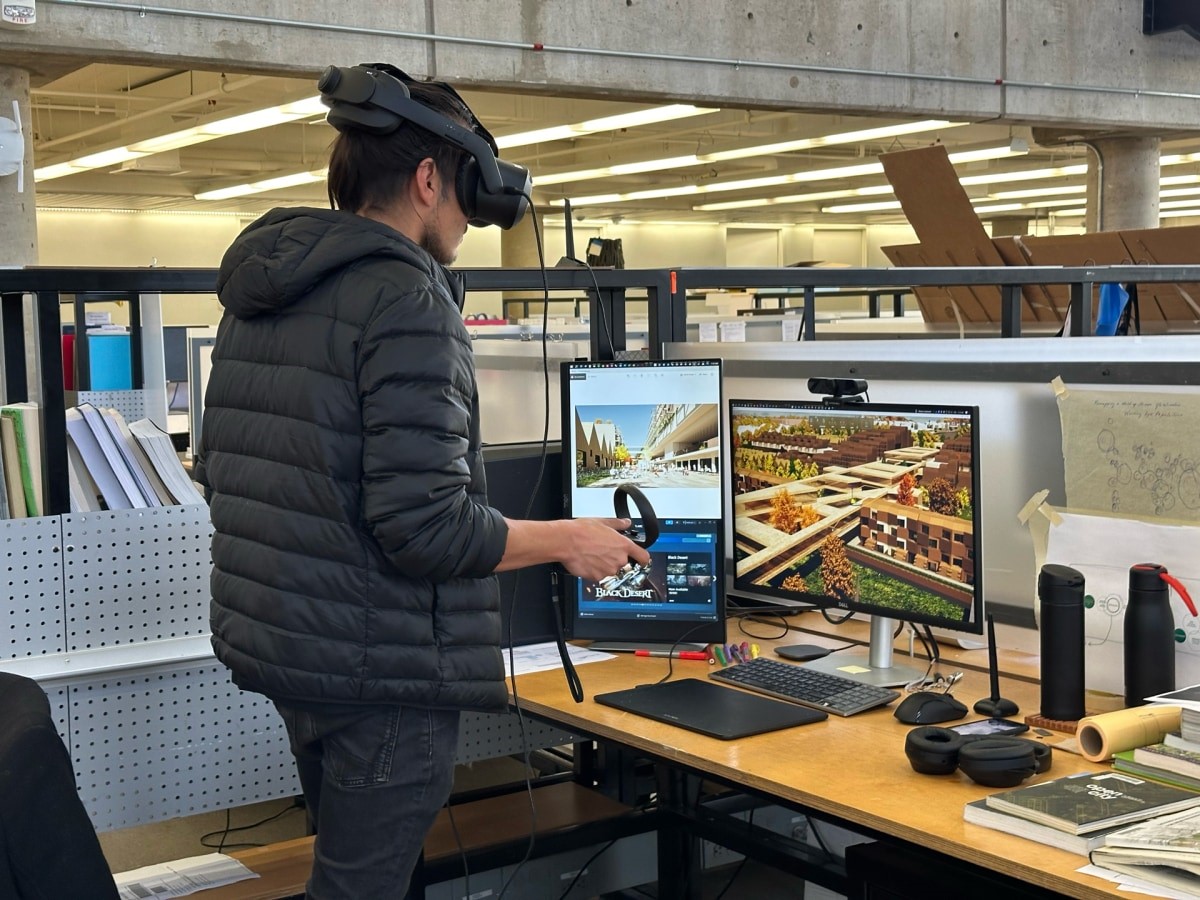
“It allows you to occupy the space while you’re making decisions, so it really allows you to get a sense of scale. And it allows you to check your work and make sure it works before you get too enamored with it,” he says.
One project Yuen’s class has been exploring uses VR to get a feel for the development of a new urban district in the city of Boston. Others are focused on suburban settings, where development and open space are more spread out and where the experience on the ground can feel either too open and deserted or too clustered and compact. Designing with the headsets on, students can better balance the way land is used, and even think about the design in a more expansive way.
“It allows us to consider nonhuman organisms,” Yuen says. “What is it like to be a deer in the suburbs of Boston? VR allows us to change our perspective to things like that.”
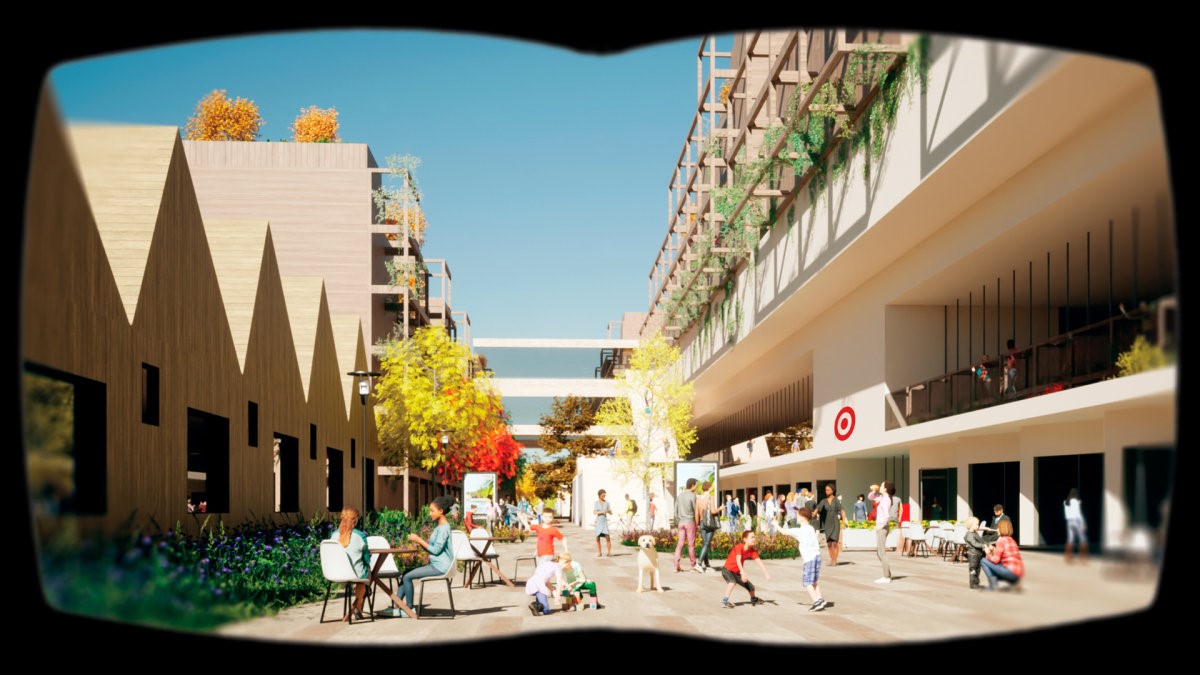
Virtual reality tools are also being used to think about designing nature, in a sense. Aidan Ackerman is an assistant professor of landscape architecture at SUNY College of Environmental Science and Forestry in Syracuse, New York. He’s been using virtual reality to visualize forests and urban tree plantings over time.
Using data-based software, Ackerman’s VR tool can simulate the growth of tree species under specific environmental conditions. For example, it can give forest land owners a time-lapse view of how their lands might change over time if they were to implement certain sustainable forestry practices. Or, it can offer underserved urban residents a look at how their street or neighborhood could change if foliage were planted there.
The conditions of the place affect the growth of the trees in the software, so a sunny hill may result in different growth patterns than a patch of earth on a street lined with five-story buildings. Rather than plopping models of mature trees in, the visualization shows how trees will grow and change over time under their specific circumstances. “You see it actually transforming the place,” Ackerman says.
The tool is more than a fancy visualization. Ackerman says these experiences include detailed data on the performance of tree-planting scenarios, from how much carbon a sustainable forestry plan could help a landowner sequester (and the state-level incentive programs they could qualify for) to the street-level temperature reduction a mature street tree canopy could bring to a neighborhood.
But Ackerman also notes that the VR experience is, importantly, an experience. It’s been shown to help incite a sense of awe and wonder in users, which he says is crucial to encouraging changes in perspective on how a space should be managed or designed. “We experience landscapes as moving through and being within them, not from the outside in,” he says. “So we’re trying to re-create that experience to help awaken these internal states, and studies have shown they can move people towards more sustainable decision-making toward the environment.” Bringing these experiences to more people could help democratize design.
This change is already underway. Emerging VR tools are making the process of designing buildings and spaces more of a collaboration among stakeholders than a top-down product from anointed designers. Sometimes it’s as simple as fixing a construction mistake before it gets made. Other times it’s putting a potential design in front of a client so they can actually help co-create it. But the true promise of VR is giving people a view of what’s possible, and a sense for what it would actually take to get there.
(11)

